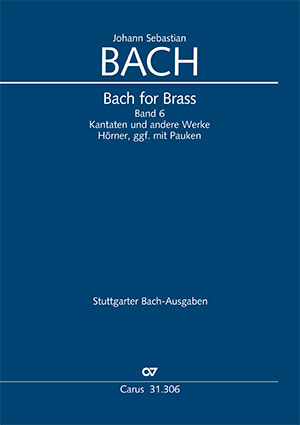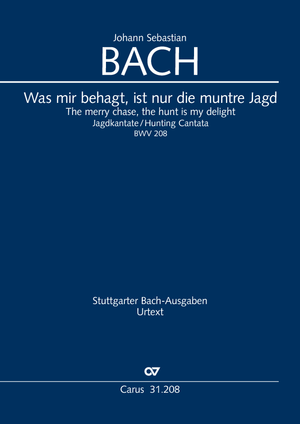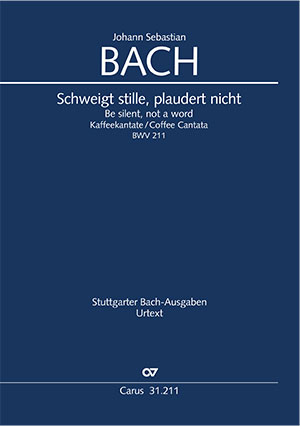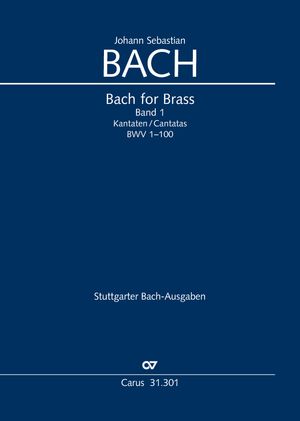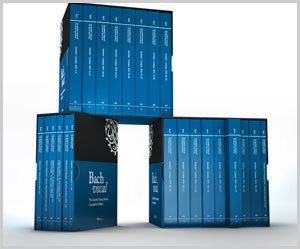
Lasst uns sorgen, lasst uns wachen
Herkules am Scheideweg (Dramma per musica) BWV 213, 1733
What does Bach’s Christmas Oratorio have to do with Hercules? More than you might think at first glance. In the fall of 1733, with the eleventh birthday of the Saxon Crown Prince Friedrich Christian fast approaching, Johann Sebastian Bach composed the secular cantata Lasst uns sorgen, lasst uns wachen (Let us watch him, let us guard him), which he then performed on the prince’s birthday (September 5) with the Collegium Musicum in the garden of Zimmermann’s coffeehouse in Leipzig.
The libretto by Picander tells the mythological story of the young Hercules, who, forced to choose between lust and virtue, naturally chooses the “right” path. The fact that Hercules is intended to represent the young Crown Prince is already suggested in the opening choral movement before becoming explicit in the closing chorus.
Most of the choruses and arias in the cantata are familiar today through their incorporation by Bach into his later Christmas Oratorio, BWV 248. For example, the festive opening chorus “Lasst uns sorgen, lasst uns wachen” (Let us watch him, let us guard him) forms the opening chorus “Fallt mit Danken, fallt mit Loben” (Bow ye, thankful, kneel and praise ye) of the New Year’s cantata. While the musical impact is no doubt altered by the unfamiliar thematic embedding, the audience is sure to make many pleasant rediscoveries!
-
Compositeur
Johann Sebastian Bach
| 1685-1750Jean Sébastien Bach compte parmi les compositeurs essentiels de l'histoire de la musique occidentale. Il faisait partie d'une grande dynastie de musiciens, dont furent originaires nombre de musiciens municipaux et d'organistes dans les régions de Thuringe et de Saxe.
Bach vocal
Depuis la fondation des Éditions Carus en 1972, la publication des oeuvres de Johann Sebastian Bach revêt une importance particulière. En 2017, année du 500e anniversaire de la Réforme, nous avons clôturé le projet Bach vocal. L'intégralité de la musique vocale sacrée de Bach est désormais disponible en éditions modernes des textes originaux, matériel d'exécution compris. Une édition globale de toutes les partitions dans un coffret de grande qualité est aussi proposée. Plus d'information sur la personne
-
Éditeur
Uwe Wolf
| 1961Uwe Wolf studied musicology, history, and historical ancillary science at Tübingen and Göttingen. After receiving his doctorate in 1991 he was a research assistant at the Johann-Sebastian-Bach-Institut in Göttingen. From 2004 he worked at the Bach-Archiv Leipzig. There he directed a both research departments, was substantially responsible for the redisigning of the Bach Museum, and he developed the digital Online-Projekt Bach. Since October 2011 he has been the Chief Editor at Carus-Verlag, Stuttgart. He has taught at various universities and also belongs to the editorial boards of several complete editions. Plus d'information sur la personne
-
Parolier/Librettiste
Christian Friedrich Henrici (Picander)
| 1700-1764
-
Basse continue réalisée
Daniel Ivo de Oliveira
-
Basse continue réalisée
Paul Horn
| 1922-2016Paul Horn war ein deutscher Kirchenmusiker, Organist, Komponist und Musikwissenschaftler. Er studierte Kirchenmusik und Orgel an der Evangelischen Kirchenmusikschule Esslingen am Neckar bei Hans-Arnold Metzger und Musikwissenschaft, Theologie und Geschichte an der Universität Tübingen. Seine berufliche Laufbahn begann als Kantor an der Evangelischen Michaelskirche in Stuttgart-Degerloch. 1954 wurde er Kantor an der Evangelischen Stadtkirche Ravensburg, eine Position, die er bis zu seiner Pensionierung innehatte. Als Musikwissenschaftler arbeitete Horn bis ins hohe Alter eng mit Carus zusammen. So stammen zahlreiche Carus-Klavierauszüge aus seiner Feder. Plus d'information sur la personne
Questions fréquentes sur l'œuvre
 Il n'y a pas encore de questions et réponses concernant cette œuvre ou vous n'avez pas trouvé la réponse à votre question sur l'œuvre ? Cliquez ici et envoyez votre question spécifique à notre service clients.
Il n'y a pas encore de questions et réponses concernant cette œuvre ou vous n'avez pas trouvé la réponse à votre question sur l'œuvre ? Cliquez ici et envoyez votre question spécifique à notre service clients.


